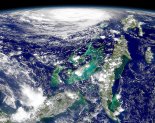What to Know
- On Sept. 16, 1999, Hurricane Floyd dropped more rainfall in a single day on Philadelphia than in the previous 125 years.
- The storm was deadly, with 14 deaths reported in Delaware, New Jersey and Pennsylvania.
- Yet it still didn't break one record, which stills stands after 116 years, including the epic storms which have struck in recent decades.
Well before Hurricane Dorian crept up the East Coast, and more than a decade before Superstorm Sandy would change the Jersey Shore forever, a hurricane left its mark on the Philadelphia region.
Hurricane Floyd arrived in the Delaware Bay on Sept. 16, 1999, and went on to dump the most rain on Philadelphia in a single day in 125 years of record-keeping. (The record was broken in 2003 during a stationary thunderstorm event.)
NBC10 meteorologist Glenn "Hurricane" Schwartz, who covered Floyd for the station and wrote about it in his 2002 book "The Philadelphia Area Weather Book," remembers the storm causing "some of the worst flooding ever recorded."
"The rivers and creeks rose rapidly," he said on the 20th anniversary. "All-time flood records were set along the Brandywine, Wissahickon, Perkiomen, Neshaminy and Ridley Creeks and the Christina River."
Unlike Superstorm Sandy 13 years later, which devastated the Jersey Shore, Floyd actually dropped more rain inland.
More than 10 inches of rain fell in some Philadelphia suburbs. In Wilmington, Delaware, more than eight inches was recorded Sept. 16.

The lead-up to the historic rains in the Philadelphia region reminded some of Dorian. Like that hurricane, Floyd also initially threatened Florida, but then struck Georgia and the Carolinas as it spun its way north.
"As Floyd moved from the Bahamas toward the Florida East Coast, it led to the biggest evacuation in U.S. history up to that point," Schwartz said. "But it turned north just before hitting Florida. It then tracked up the East Coast."
When it did strike in Delaware, New Jersey and Pennsylvania, it proved deadly. Fourteen people died: six in Pennsylvania, six in New Jersey and two in Delaware.

Yet Floyd didn't break one long-standing meteorological barrier for the Jersey Shore. It wasn't technically a hurricane as its eye crossed the Delaware Bay and hit Cape May.
Here's how Schwartz wrote about it in his book, which he co-wrote with fellow meteorologist Jon Nese: "As the eye of Floyd crossed the Delaware Bay and headed toward southern New Jersey, the hurricane was downgraded to a tropical storm just before the center passed over Cape May. Thus, Floyd was not officially recorded as a direct hurricane strike in New Jersey."
For all the storms and floods that have struck since Floyd, including the epic destruction of Sandy in October 2012, none has registered — officially — as a hurricane when they reached the Jersey Shore, Schwartz said on the anniversary.
The last time that happened was in 1903, a mark now 116 years old.


